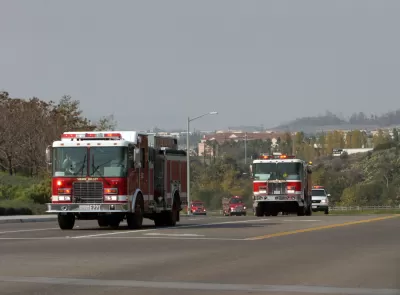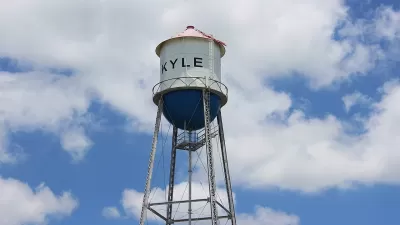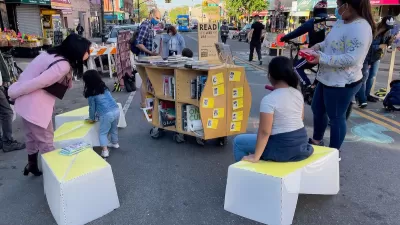Fire standards and street design manuals, meant to protect people, actually make them less safe by damaging walkability and encouraging driving—a classic example of silo thinking.

"Of all the urbanism specialists with tunnel vision, fire chiefs, fire marshals, and traffic engineers are probably the most dangerous. And by “dangerous,” I don’t just mean that they’re a threat to good urbanism; they also get people killed, which is exactly the opposite of what they are commissioned to do. A classic example of their silo thinking is playing out right now in Celebration, Florida, where the proposed measures of eliminating on-street parking spaces and eliminating street trees will almost certainly leave Celebration a less safe place than it is today.
Let’s look at things from both a common-sense perspective and a data-driven perspective. Getting rid of street trees does some really bad things for safety: First, it eliminates the first line of defense for those who are walking or biking on the sidewalk (when the streets are too dangerous for biking). A car crashing into a tree at 35 miles per hour will deploy the airbags, but the driver and passengers will likely walk away with little more than bruises. But a car traveling 35 miles per hour that crashes into someone who is biking or walking will likely kill them. Higher speed = more deaths and injuries..."
"...the logical conclusion is that our traffic engineering standards are killing about 23,000 people per year in the US! As with fire standards, traffic engineers should be embracing traditional urbanism with open arms because it saves so many lives per year!"
FULL STORY: How Fire Chiefs & Traffic Engineers Make Places Less Safe

Trump Administration Could Effectively End Housing Voucher Program
Federal officials are eyeing major cuts to the Section 8 program that helps millions of low-income households pay rent.

Planetizen Federal Action Tracker
A weekly monitor of how Trump’s orders and actions are impacting planners and planning in America.

Ken Jennings Launches Transit Web Series
The Jeopardy champ wants you to ride public transit.

Rebuilding Smarter: How LA County Is Guiding Fire-Ravaged Communities Toward Resilience
Los Angeles County is leading a coordinated effort to help fire-impacted communities rebuild with resilience by providing recovery resources, promoting fire-wise design, and aligning reconstruction with broader sustainability and climate goals.

When Borders Blur: Regional Collaboration in Action
As regional challenges outgrow city boundaries, “When Borders Blur” explores how cross-jurisdictional collaboration can drive smarter, more resilient urban planning, sharing real-world lessons from thriving partnerships across North America.

Philadelphia Is Expanding its Network of Roundabouts
Roundabouts are widely shown to decrease traffic speed, reduce congestion, and improve efficiency.
Urban Design for Planners 1: Software Tools
This six-course series explores essential urban design concepts using open source software and equips planners with the tools they need to participate fully in the urban design process.
Planning for Universal Design
Learn the tools for implementing Universal Design in planning regulations.
Ada County Highway District
Clanton & Associates, Inc.
Jessamine County Fiscal Court
Institute for Housing and Urban Development Studies (IHS)
City of Grandview
Harvard GSD Executive Education
Toledo-Lucas County Plan Commissions
Salt Lake City
NYU Wagner Graduate School of Public Service





























